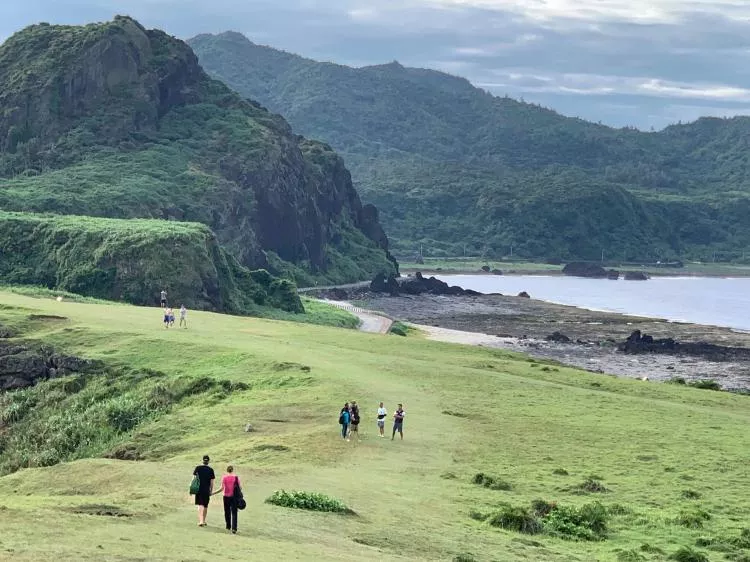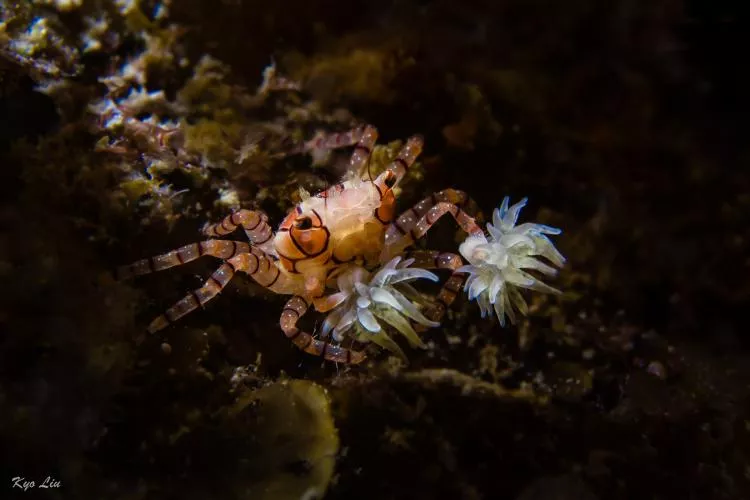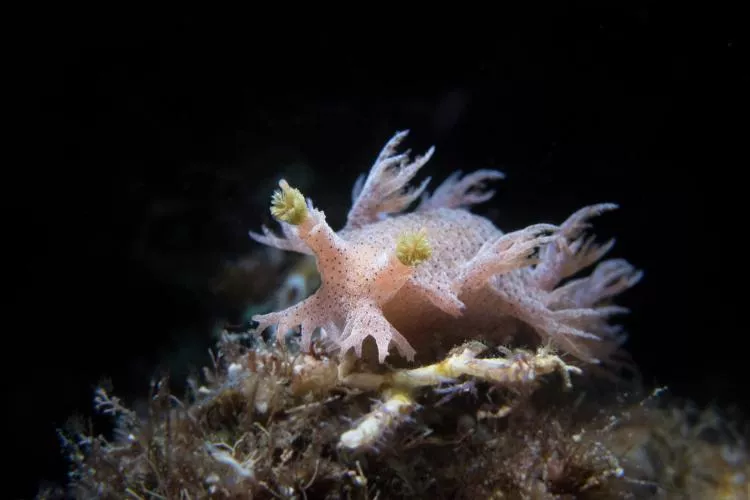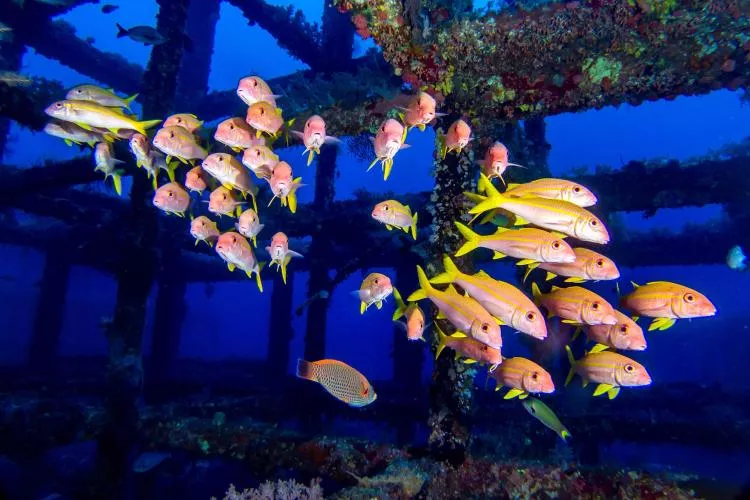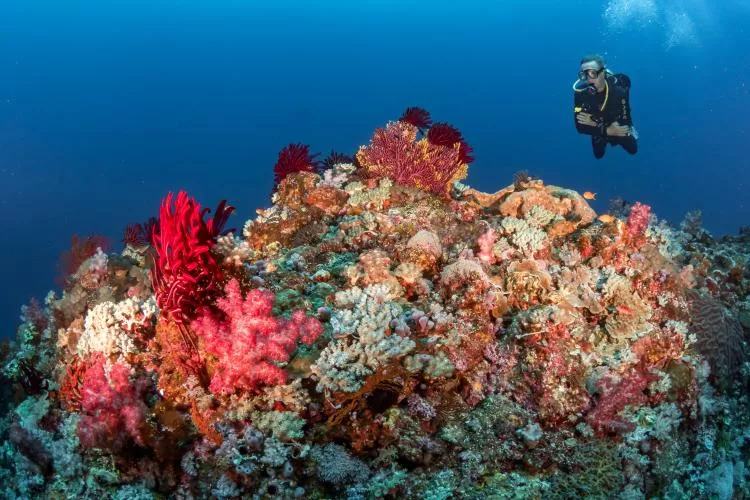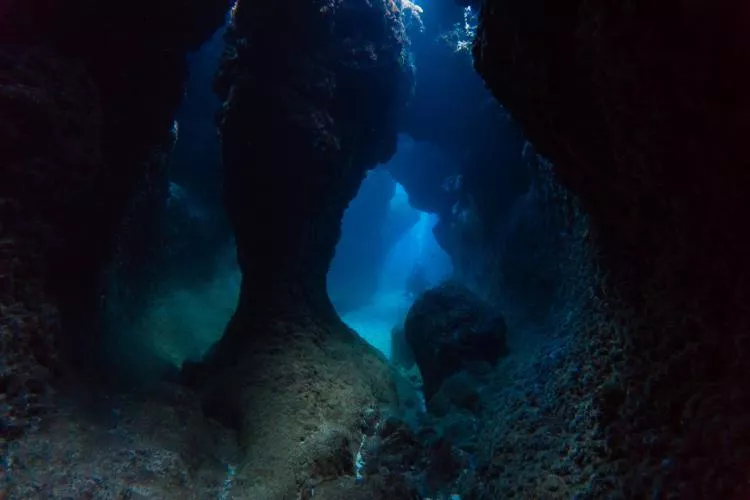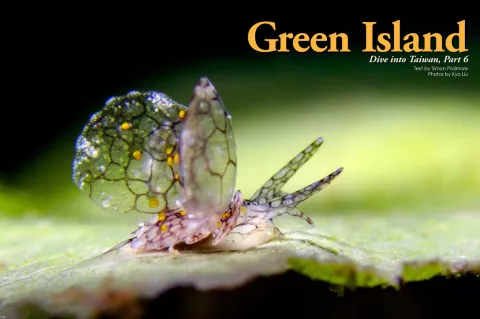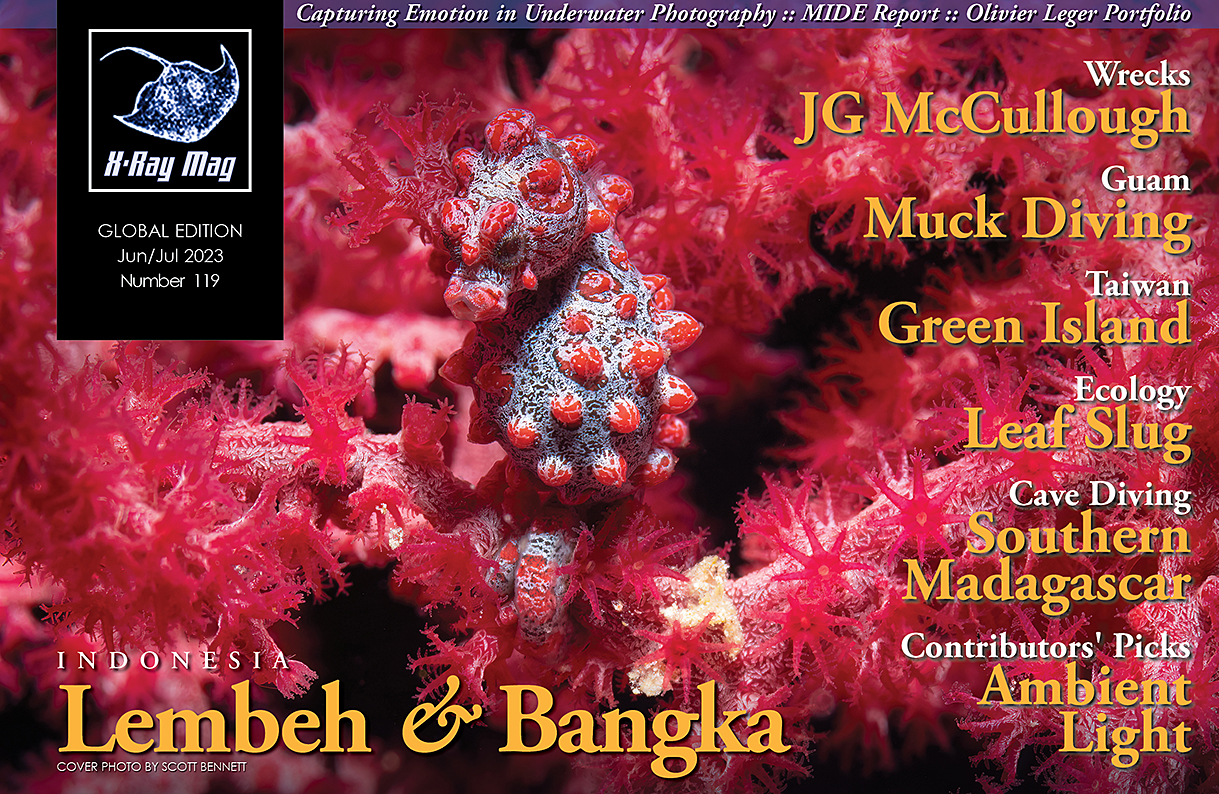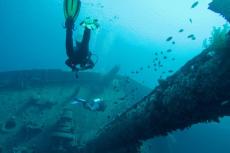Green Island is considered Taiwan’s diving heartland by local divers, and hence, it is an essential rite of passage to do a dive trip there. Now, divers from abroad are discovering the joys of its beautiful underwater realm. Simon Pridmore gives us an inside look.
Contributed by
Taiwan is a group of Pacific islands surrounded by warm tropical seas. It is easy to get to and get around and it is a first-world society with outgoing, friendly, laid-back people. Taiwan has some very good scuba diving and a network of dive centres and resorts with first-class professional staff, equipment and services. They offer scuba experiences, basic training courses and fun diving for a young, enthusiastic first generation of Taiwanese divers.
Yet, when divers elsewhere in the world think about diving destinations, Taiwan is unlikely even to be a blip on their radar screen. Very few people outside Taiwan have ever thought to enquire about the diving there, and very few people inside Taiwan have ever thought to tell anyone about it. Until a couple of years ago, that is, when some far-sighted folks asked me and Taiwanese underwater photographer Kyo Liu to write a book.
The book is called Dive into Taiwan, and this is the last in a series of six articles, each covering one of Taiwan’s diving regions, designed to give you a flavour of what to expect from a Taiwan dive trip. The book covers much more than diving. It talks about the people, culture, countryside, cities, food and lifestyle to give readers a fully immersive experience—diving into Taiwan in every way. But in this series, I will just focus on the underwater attractions, with the help of Kyo’s amazing photographs.
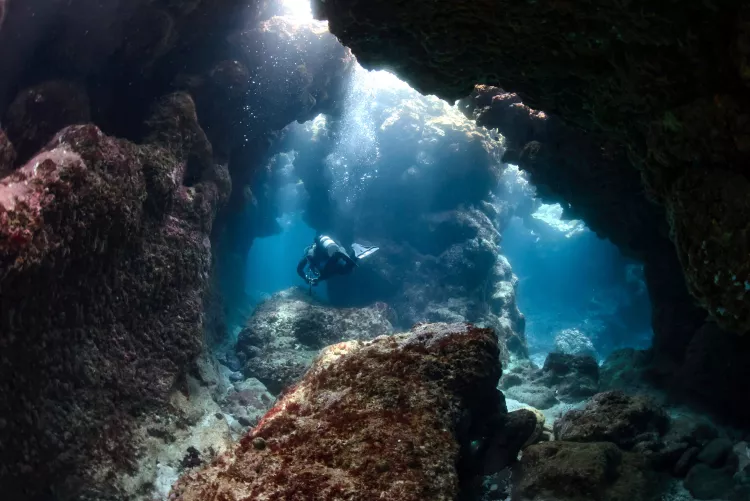
Green Island (Ludao)
Until comparatively recently, Green Island (Ludao), an extinct volcano at the edge of the Pacific Ocean just off the Taitung coast, was a place of death, darkness and despair, a place where very few travelled willingly and from which many never returned. For more than four decades following the arrival in Taiwan of the Republic of China Government in 1949, Green Island was known primarily as a penal colony, designed to incarcerate and re-educate enemies of the regime.
Today, it has been transformed, principally by the sport of scuba diving, into a place of light and life. Green Island is Taiwan’s diving heartland and for Taiwanese divers, a trip there is an essential rite of passage. It offers the most sophisticated services in Taiwan for experienced sport divers, with plenty of high-quality dive boats and expert crews. Here are some key dive sites around Green Island.
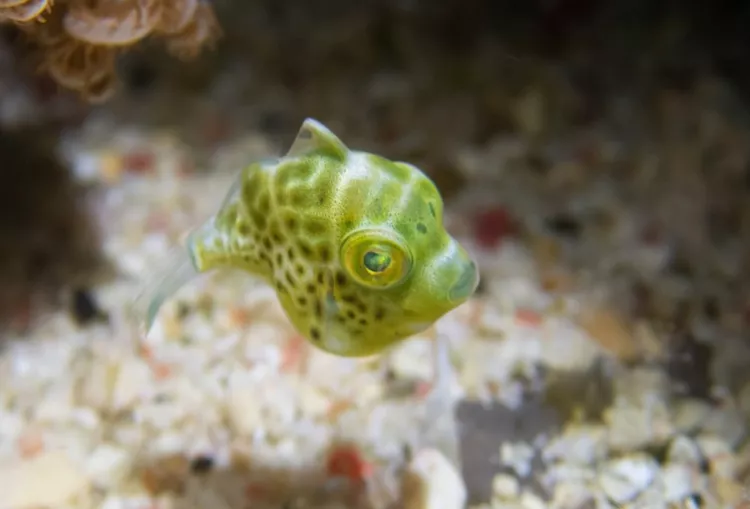
Southwest Green Island
Shilang Beach. A huge number of young Taiwanese get their first experience of snorkeling and scuba diving on Green Island’s Shilang Beach. It is quite a sight to see a hundred or more people lined up in ranks on the beach in identical wetsuits, excited at the prospect of their first glimpse of the world beneath the waves. The chatter factor is high, and a small forest of selfie sticks rises from the waiting throng, poised to record the significant moments. In the sea, massed groups of snorkelers, clinging to rubber rings, outnumber the smaller teams of divers swimming around a few metres below them.
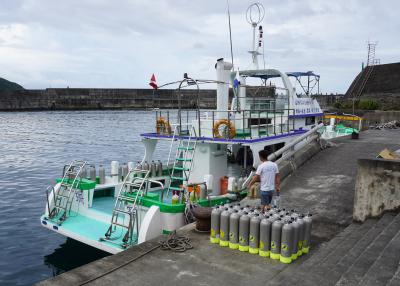
Shilang is much more than just a beach dive for new bugs, however. The bay is huge, so there is plenty of room for more experienced divers too. If you take a boat out of Nanliao harbour and drop in a little way out to sea, the crowds will not bother you at all. In the slightly deeper parts of the bay, you will find healthy corals, more fish life and probably a few sea snakes too.
This being Taiwan, keep your eyes peeled for small stuff among the rocks and in the sand and you will not be disappointed. There are plenty of nudibranchs around, and Shilang is where underwater photographer Kyo Liu took a fabulous image of a tiny green mimic filefish close to a small stand of xenia coral.
Steel Reef. Farther out, at a depth of 30m or so, you will find Steel Reef, a series of metal cubes dropped onto the seabed in 2004 as a fish aggregation device. The cubes are now almost completely covered in corals, barnacles, sponges and sea squirts, and are home to batfish, goatfish, bluefin trevally, wrasse and parrotfish. The fish aggregation concept has worked. It is an excellent site for photographers wanting to shoot images of schooling fish.
Dabaisha. Beyond the promontory at the southern end of Shilang is another sandy bay called Dabaisha, which features some gorgeous topography in the form of a mini mountain range of pinnacles, festooned in soft corals in every pastel shade imaginable.
Dabaisha shore dive typically ends among a maze of shallow coral canyons. There are caverns to explore here, filled with schools of copper sweepers. In several places, the roof of a cavern has collapsed, creating a chimney to the surface, and when the sun is high in the sky, a shaft of light shines down through the reef, illuminating the darkness and surprising the sweepers, which swirl around you, the sunlight sparkling off their scales.
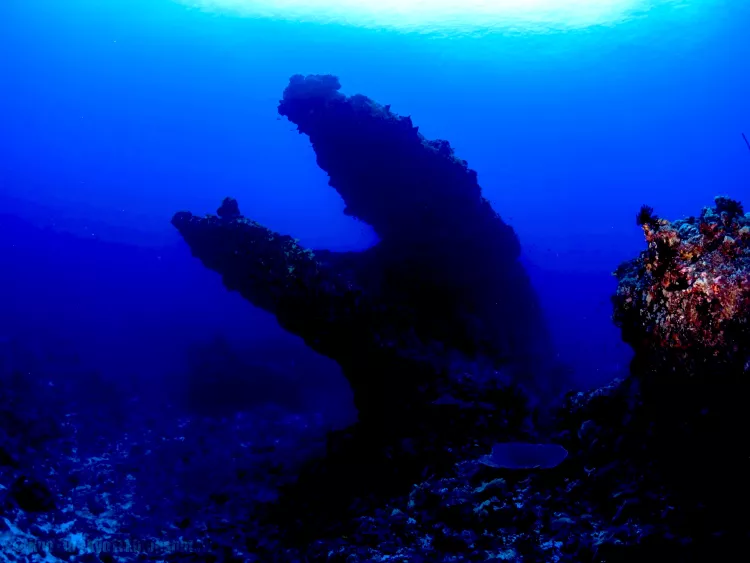
Chicken Reef. Farther out to sea is Chicken Reef, which features a couple of spectacular, contorted lava monoliths, one (as you may have guessed) shaped like a chicken’s head, while the other looks like a crocodile with its mouth wide open.
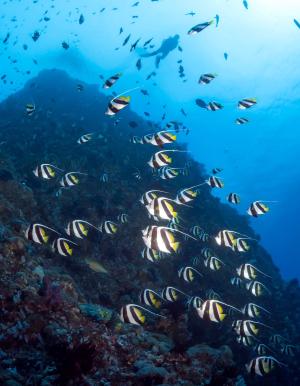
But here, beyond the protection of the coast, there is usually a good current running, so this is a dive where the drop has to be executed perfectly to get the divers onto the seabed at just the right place. You need to enter the water far enough upstream to give you plenty of time to make a comfortable drifting descent onto the site. On a moving boat in a moving sea, it is tough to get the drop just right, but the Green Island dive boat crews are real experts and never fail to impress.
In the presence of a current, the soft corals clinging to the rocks extend themselves fully to catch the nutrients borne past them by the fast-moving water. This causes the reefscape to explode in colour like an underwater fireworks show. From the shelter of the bommies, beneath the strangely shaped pinnacles, you will see fusiliers, rainbow runners, unicornfish, surgeons, spotted trevallies, blue-lined snappers, yellow goatfish and bannerfish. Around you, tall pale whip corals bend, shake and shimmer with the force of the flow, like stands of young bamboo in a strong wind.
Meanwhile, all over the reef, smaller fish dart and dodge, adding to the action and lending further dabs of colour to the scene. Leopard wrasse and lemonpeel angelfish, purple anthias, spangled emperorfish, blue-sided wrasse, Johnston damselfish, Watanabe angelfish and orangetail filefish compete for the divers’ attention, as if saying “take a picture of me!” Chicken Reef is an excellent dive. Put it at the top of your list of must-dos.
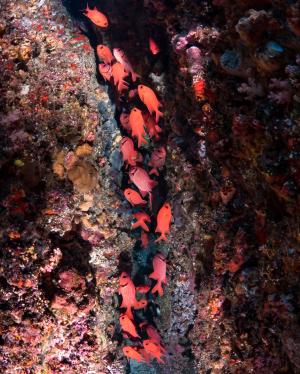
North Green Island
Grand Canyon & One Line Sky. The best dives in the north of Green Island are on several tall pinnacles rising to the surface or very close to the surface from depths well beyond normal scuba diving reach. Typical of these are Grand Canyon and One Line Sky, both wonderful dives around current-swept undersea mountains.
Grand Canyon has a large ravine cut into it, while One Line Sky features a swim-through that begins horizontally, then becomes almost vertical and ends in a narrow restriction that just allows one (slim) diver to pass through without touching the sides. From inside, just as you emerge, you look up and all you see is a sliver of sunlight ahead. One Line Sky (Yi Xian Tian) is a Chinese phrase normally used by trekkers and climbers to describe a very narrow passage between huge rock faces on either side, where the sky is only visible via a very thin crack.
Every rock surface is painted in brightly coloured soft corals and armies of small reef fish swarm over the sunlit upper reaches of the pinnacles. Deeper down, scarlet soldierfish and big-eyes squeeze themselves into and out of small fissures in the rock. For bigger fish like passing tuna or mackerel, it is worth keeping an eye on what is happening out in the blue. And what a blue it is! This is the deep, dark, rich hue of the Kuroshio in all its glory.
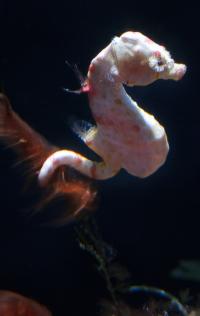
Gongguanbi & Chaikou. If you are looking for small creatures, the northern coast has a number of highly rewarding sites. The best of these are Gongguanbi (which translates as “Mansion Nose”) in the east, and the Chaikou snorkeling area in the centre and Zhongliao Port, which lies just 500m from the Green Island lighthouse in the west. These are all shore dives with entries of varying degrees of difficulty (Zhongliao Port is the easiest).
Prizes you may find on an underwater treasure hunt in the north of Green Island include Coleman’s pygmy seahorses (Hippocampus colemani) and Pontoh’s pygmy seahorses (Hippocampus pontohi).
Look out also for sap-sucking slugs such as the Costasiella kuroshimae (notice the name) nicknamed “Shaun the Sheep”, the black and gold Cyerce nigricans, bobtail squids, boxer crabs, harlequin shrimp and the gorgeous Hydatina physis sea snail.
Southeast Green Island
Gun Shui Bi. The site that brought Green Island to the attention of the international diving community some years ago lies off the southeastern corner, straight out to sea from the hot springs at Zhaori. It is called Gun Shui Bi and it became famous because, in January and February each year, schooling scalloped hammerhead sharks can be found there at scuba diving depths. The site is in the open ocean and strong currents and high seas are common during the winter months. The hammerheads like cool water, so the chillier it is, the shallower they come, although they rarely come closer to the surface than 24m or so. When the water in the shallows is warmer, the school stays deep, below the oceanic thermocline and way beyond sport diving range.
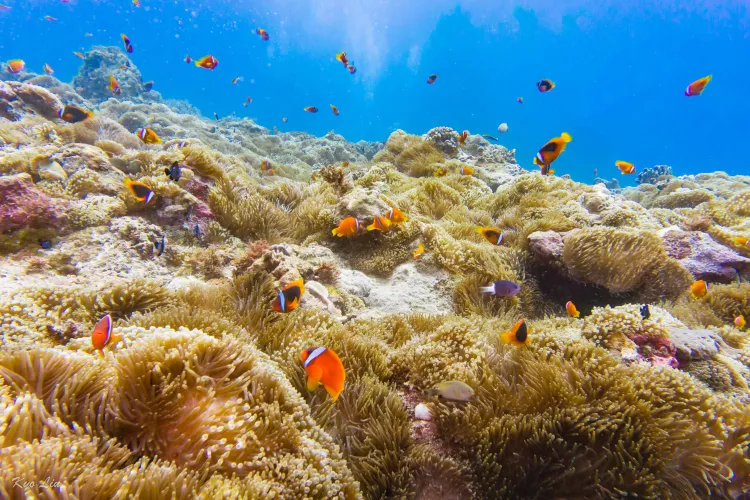
Yonaguni. The southern Japanese island of Yonaguni—which is the next big rock to the north and closer to Green Island than Taipei (so not very far, if you are a hammerhead shark)—has a similar and more famous dive site.
For divers, both local and coming from afar, Green Island is a gem of a location, where divers of all levels can experience the quintessential underwater realm of Taiwan. To learn more, read Dive into Taiwan, which is available in paperback and e-book on Amazon, Apple, Kobo and other bookshops online worldwide. ■

